Amazon S3 Data Source
Configuring SearchBlox
Before using the Amazon S3 Data Source, install SearchBlox successfully, then create a Custom Collection.
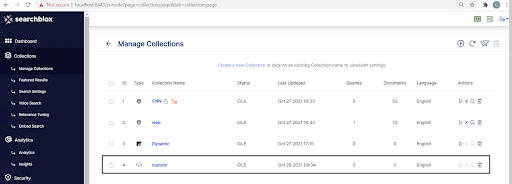
Configuration details of Amazon S3 Data Source**
| encrypted-ak | Encrypted access key from Amazon s3. Encrypter would be available in the downloaded archive |
| encrypted-sk | Encrypted secret key from Amazon s3. Encrypter would be available in the downloaded archive |
| region | Region of Amazon S3 instance |
| data-directory | Data Folder where the data needs to be stored. Make sure it has write permission. |
| api-key | SearchBlox API Key |
| colname | The name of the custom collection in SearchBlox. |
| queuename | Amazon S3 SQS parameter. This is required for update of documents after indexing in a bucket. |
| private-buckets | If set to true the content from private buckets will be indexed |
| public-buckets | If set to true the content from public buckets will be indexed |
| url | SearchBlox URL |
| includebucket | S3 buckets to be included |
| include-formats | File formats to be included |
| expiring-url | Expiring URLs in the search result. Default URL will be expiring URL |
| expire-time | Default expire time will be 300 mins |
| permanent-url: | permanent URLs in the search result. Among the expiring and permanent URL expiring URL is given more preference |
| max-folder-size | Maximum size of static folder after which it should be sweeped in MB. |
| servlet url & delete-api-url: | Make sure that the port number is right. If your SearchBlox runs in 8443 port the URLs should be right. |
Steps to trigger notification when a document is updated in S3
- In Amazon S3 console under services, click on the Simple Queue Service(SQS) which can be found under application integration.
- The Select Create New Queue, then give an appropriate queue name and configure the queue.

- Set message visibility timeout, retention days and receive message wait time.

- Receive message wait time should be set between 1 - 20 seconds. So as to set the queue for long polling.
- Then in the S3 console select a bucket whose SQS you need to set and click on “Properties”, Then in “Advanced settings” click on events.
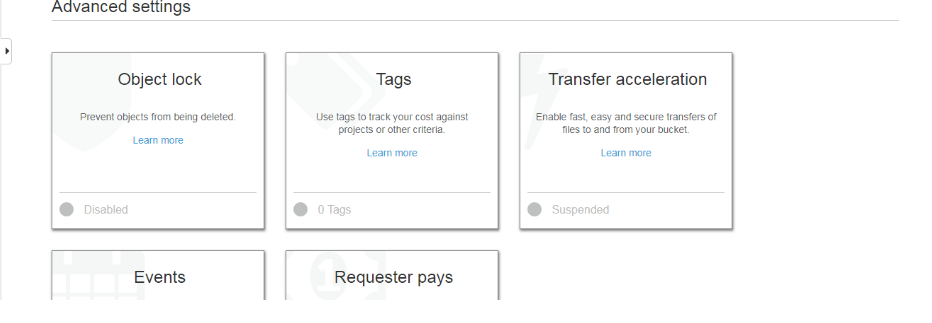
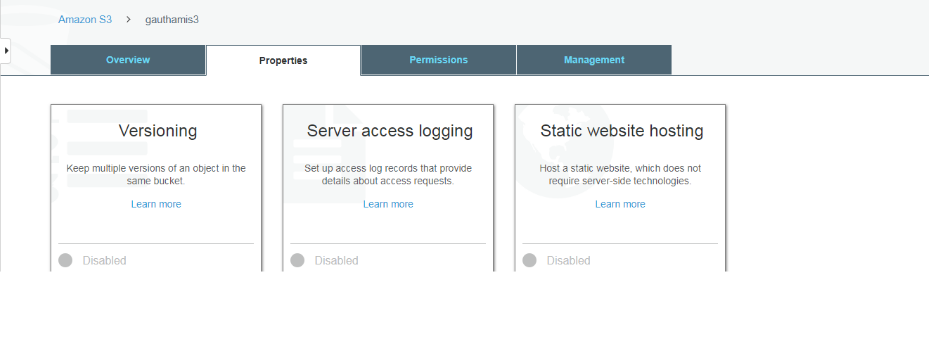
- Now select “Add Notification” and give a name to the notification and check the events for which you need notification.https://files.readme.io/e00dec7-4.png
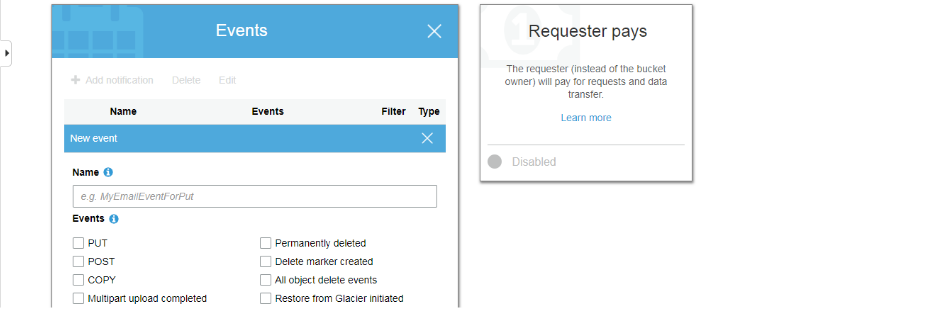
- Then in “Send To” fill SQS Queue and under SQS fill in the name of the queue which we created before and click on Save.
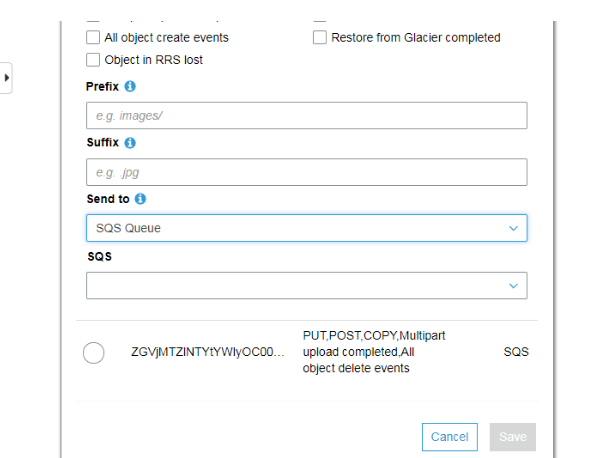
-
Now, whenever there is change to the documents in this particular bucket then a notification will be sent to SQS.
-
The queue names need to be given in the S3 connector yml file in order to trigger indexing whenever a document is updated
Updated about 4 years ago
